1. Genetic profiling of trees helps convict timber thieves
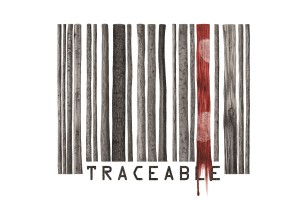 Our researchers helped convict National Forest timber thieves in a landmark case in the United States. An international team including Dr Eleanor Dormontt and Professor Andy Lowe developed DNA markers for certain trees. This was used to create a DNA profiling reference database of trees which could be used in court proceedings. Illegal logging continues to be a scourge around the world, posing a huge threat to global biodiversity. The industry is estimated to be worth USD100 billion annually.
Our researchers helped convict National Forest timber thieves in a landmark case in the United States. An international team including Dr Eleanor Dormontt and Professor Andy Lowe developed DNA markers for certain trees. This was used to create a DNA profiling reference database of trees which could be used in court proceedings. Illegal logging continues to be a scourge around the world, posing a huge threat to global biodiversity. The industry is estimated to be worth USD100 billion annually.
This research also led to the publication of The Best Practice Guide for Forensic and Timber Identification for the United Nations Office on Drug and Crime(UNODC). The best practice guide was developed with a substantial contribution from Dr Dormontt. Following the publication, the global scientific community came together in a call to stop illegal logging. The campaign continues to end this egregious practice.
2. Sea snakes have extra sense for water living
T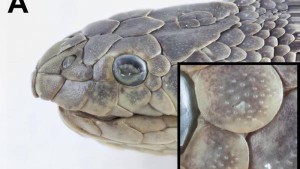 he move from life on land to life in the sea has led to the evolution of a new sense for sea snakes. Sea snakes were found to have a kind of Force-like sensing capability. On their heads are tiny structures called ‘scale sensalia’, which allows sea snakes to perceive objects around them without direct touch. While it’s not certain what these snakes can actually sense, it’s thought that sea snakes can pick up the vibrations that are generated underwater by moving objects.
he move from life on land to life in the sea has led to the evolution of a new sense for sea snakes. Sea snakes were found to have a kind of Force-like sensing capability. On their heads are tiny structures called ‘scale sensalia’, which allows sea snakes to perceive objects around them without direct touch. While it’s not certain what these snakes can actually sense, it’s thought that sea snakes can pick up the vibrations that are generated underwater by moving objects.
This research was performed by PhD student Jennna Crowe-Riddell and her supervisor Dr Kate Sanders. The story was featured in many media outlets including Australian Geographic and Cosmos Magazine. Learn more about this great story by listening to this Radio Adelaide podcast featuring Crowe-Riddell.
3.‘Snotty gobble’ could be good weed controller
A native parasitic plant found commonly thro ughout south-eastern Australia was found to show great promise as a potential biological control agent against introduced weeds. The native vine native vine Cassytha pubescens, also known as ‘snotty gobble’, could save millions of dollars each year by acting as a control against invasive plants. Snotty gobble was found to grow on many invasive species via suckers, which latch on to a host plant, leaching water and nutrients.
ughout south-eastern Australia was found to show great promise as a potential biological control agent against introduced weeds. The native vine native vine Cassytha pubescens, also known as ‘snotty gobble’, could save millions of dollars each year by acting as a control against invasive plants. Snotty gobble was found to grow on many invasive species via suckers, which latch on to a host plant, leaching water and nutrients.
The research was done by Dr Robert Cirocco, Professor Jennifer R. Watling and Associate Professor José M. Facelli and featured in New Scientist.
‘Holy Carp’ screamed the headlines! Europea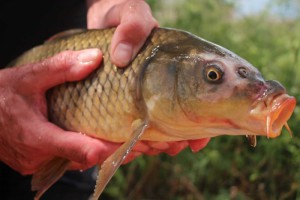 n carp are an invasive species causing much devastation in our river systems. Managing the current carp infestation problem in the Murray River systems has benefits and risks, and how we manage those can all have an impact on our environment. The Australian Government announced, to the bemusement of many, that a strain of herpes could be used to wipe out 95% of the carp population over the next 30 years. But our Honours student Richie Walsh under the supervision of Professor Justin Brookes, showed that the sudden death of mass amounts of European carp could be detrimental to the River Murray. Decomposed carp left in the River Murray would cause a drop in the oxygen levels, endangering native aquatic animals.
n carp are an invasive species causing much devastation in our river systems. Managing the current carp infestation problem in the Murray River systems has benefits and risks, and how we manage those can all have an impact on our environment. The Australian Government announced, to the bemusement of many, that a strain of herpes could be used to wipe out 95% of the carp population over the next 30 years. But our Honours student Richie Walsh under the supervision of Professor Justin Brookes, showed that the sudden death of mass amounts of European carp could be detrimental to the River Murray. Decomposed carp left in the River Murray would cause a drop in the oxygen levels, endangering native aquatic animals.
5. New artificial reef to be built to support local marine habitats
The South Australian coast line is getting a bo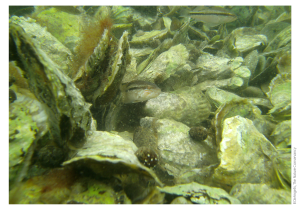 ost, thanks to research from Professor Sean Connell and Dr Heidi Alleway. Their research uncovered that oyster reefs characterised much of South Australia’s coastline from 1836 to 1910, forming one of the most widespread habitats for protein production, fisheries catch, biodiversity and filtration for water quality that sustain surrounding habitats. As a result of this discovery, a new $600,000 artificial reef system is to be built south of Ardrossan, constructed from limestone, oyster shells and live native oysters. The construction of the new reef is set to bring about a raft of intergenerational economic, social and environmental benefits.
ost, thanks to research from Professor Sean Connell and Dr Heidi Alleway. Their research uncovered that oyster reefs characterised much of South Australia’s coastline from 1836 to 1910, forming one of the most widespread habitats for protein production, fisheries catch, biodiversity and filtration for water quality that sustain surrounding habitats. As a result of this discovery, a new $600,000 artificial reef system is to be built south of Ardrossan, constructed from limestone, oyster shells and live native oysters. The construction of the new reef is set to bring about a raft of intergenerational economic, social and environmental benefits.
6. Bilby netting for conservation genetics. By Lauren White
Third year PhD student Lauren Whi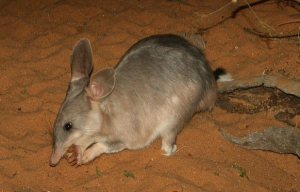 te gave us an insight into the life of a researcher. White studies the genetics of bilbies, which were once found through much of arid Australia, but have had their ranges drastically reduced due to changes in land use and the introduction of feral animals. Reintroduced populations can experience loss of genetic diversity over time, leading to negative effects such as inbreeding. For this reason, it is important to monitor the genetic diversity over time.
te gave us an insight into the life of a researcher. White studies the genetics of bilbies, which were once found through much of arid Australia, but have had their ranges drastically reduced due to changes in land use and the introduction of feral animals. Reintroduced populations can experience loss of genetic diversity over time, leading to negative effects such as inbreeding. For this reason, it is important to monitor the genetic diversity over time.
Here’s a teaser of her great story: It’s early evening at Arid Recovery; we’re driving slowly through the reserve peering intently around us using the light of a powerful spotlight torch. The silence is broken by a shout. “BILBY!”
7. New partnership to boost Asia-Pacific conservation
We announced that we’re part 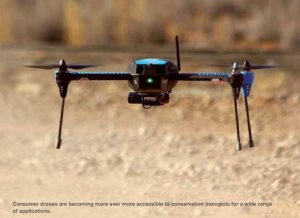 of a strategic partnership with global organisation Conservation International (CI) that will help boost conservation efforts in the Asia-Pacific region, including a global conservation drone program. The University of Adelaide and CI established a joint Centre for Applied Conservation Science, and a philanthropic partnership to raise funds for the Centre’s activities and for other CI priority activities in the region. Associate Professor Lian Pin Koh was announced as the Centre Director. The partnership is already achieving its goals, helping Timor-Leste develop a marine conservation program.
of a strategic partnership with global organisation Conservation International (CI) that will help boost conservation efforts in the Asia-Pacific region, including a global conservation drone program. The University of Adelaide and CI established a joint Centre for Applied Conservation Science, and a philanthropic partnership to raise funds for the Centre’s activities and for other CI priority activities in the region. Associate Professor Lian Pin Koh was announced as the Centre Director. The partnership is already achieving its goals, helping Timor-Leste develop a marine conservation program.
8. Investigating native plants for South Australian pickles
We got ourselves into a pickle, a g ood one though, with South Australian food manufacturer Spring Gully Foods to investigate potential sources of food colourings among Australian native plants. The project was awarded an Innovations Connections Grant of $25,000, under the Australian Government’s Entrepreneurs’ Programme. Dr Casey Hall is part of the research team that will focus on arid zone plants known to be edible and with strong colours. These plants are often salt-tolerant and desert-adapted and grow abundantly throughout Australia. Hall will be identifying pigment compounds and testing extracts with Spring Gully Foods to see how suitable they are. We can’t wait for the delicious results!
ood one though, with South Australian food manufacturer Spring Gully Foods to investigate potential sources of food colourings among Australian native plants. The project was awarded an Innovations Connections Grant of $25,000, under the Australian Government’s Entrepreneurs’ Programme. Dr Casey Hall is part of the research team that will focus on arid zone plants known to be edible and with strong colours. These plants are often salt-tolerant and desert-adapted and grow abundantly throughout Australia. Hall will be identifying pigment compounds and testing extracts with Spring Gully Foods to see how suitable they are. We can’t wait for the delicious results!
9. EI members head to Marrakech Climate Change Conference
The Marrakech Climate Chang e Conference brought together the world’s governing bodies to strengthen the global response to the threat of climate change, and our members went along to share their voice. The delegation from the University of Adelaide included Professor Andrew Lowe (Head of Delegation), Manny Solis (Deputy Head of Delegation), Mike Young and Charlie Hargroves. The delegation attended key sessions related to their fields of expertise including water, environmental and city sustainability, disaster relief programs, and the Global Carbon Fund and its role in supporting low-emission and climate-resilient development pathways.
e Conference brought together the world’s governing bodies to strengthen the global response to the threat of climate change, and our members went along to share their voice. The delegation from the University of Adelaide included Professor Andrew Lowe (Head of Delegation), Manny Solis (Deputy Head of Delegation), Mike Young and Charlie Hargroves. The delegation attended key sessions related to their fields of expertise including water, environmental and city sustainability, disaster relief programs, and the Global Carbon Fund and its role in supporting low-emission and climate-resilient development pathways.
10. Platypus venom could hold key to diabetes treatment
Just when you thought platypuses couldn ‘t get any more amazing, their venom, it seems, could help to treat diabetes. Research led by Professor Frank Grutzner at the University of Adelaide and Associate Professor Briony Forbes at Flinders University found that platypus venom contains a hormone that regulates blood glucose levels. This hormone could be used to provide an extended release of insulin for those with diabetes. How these findings can be converted into real treatment is the next question.
‘t get any more amazing, their venom, it seems, could help to treat diabetes. Research led by Professor Frank Grutzner at the University of Adelaide and Associate Professor Briony Forbes at Flinders University found that platypus venom contains a hormone that regulates blood glucose levels. This hormone could be used to provide an extended release of insulin for those with diabetes. How these findings can be converted into real treatment is the next question.
Want more research goodness? Dont miss also our Top 25 High Impact Peer-reviewed publications for 2016!




